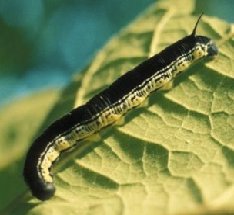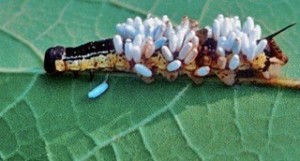Tag: catawba tree
Why Do Catawba Worms Leave Catalpa Trees?
On the All About Worms Facebook page, we were asked what causes Catawba worms to leave a Catalpa tree after many years. (We could have just as easily written “what causes Catalpa worms to leave Catawba trees,” as “Catalpa” and “Catawba” are interchangeable.) After many years of enjoying the leaves of a tree, why would Catawba worms simply leave? This is a difficult question to answer because there are various reasons why Catawba worms might leave any given Catalpa tree, and why they left our reader’s trees in particular is impossible for us to say without knowing anything about his circumstances. He merely asked “what will make” the worms leave. To a generic question we can only provide a generic answer, so we’ll explain some of the general reasons Catawba worms leave Catalpa trees.
How to Attract Catawba Worms to Your Catalpa Trees
A reader asked us a couple of days ago why there are no longer Catawba worms on her Catalpa trees (or Catalpa worms on her Catawba trees – “Catalpa” and “Catawba” are interchangeable). Catawba worms make excellent fishing bait, so the reader was keen to find out how to attract them back to her trees. Since she gave no information about her circumstances, it’s of course very difficult to say why the Catawba worms left, and for similar reasons it is hard to say how to get them back. (Obviously, the two questions are related.) Even in the absence of specific information, we can still supply some general information about attracting Catawba worms to Catalpa trees, and what keeps them away.
White Eggs on Catalpa Worms or Catawba Trees
A reader recently wrote to us about Catalpa worms, also called “Catawba worms,” that are on her Catalpa trees, or “Catawba trees.” (“Catawba” can basically always replace the word “Catalpa” – they are both common, interchangeable names.) The phrasing of the reader’s email is a slightly peculiar. She speaks of her “fourth crop this year for the Catalpa worms,” which seems to imply she is referring to the Catalpa worms themselves as the “crop.” (This isn’t as strange as you might think because although people plant Catalpa trees for various reasons, they often plant them precisely to attract Catalpa worms, which make excellent fish bait, and thus the worms might be referred to as a “crop.”) However, she then says the “crop has white egg like things on them,” and here we are not sure if the crop means the Catalpa worms or the Catalpa trees, as the latter of which should be where any Catalpa eggs are found. In any case, the reader is wondering what the “white egg like things” are because she didn’t see them in the first three “crops.” So, we have a relatively straightforward question: what are the white egg-like things on her Catalpa worms or Catalpa trees?
Catawba Worms and What They Eat
We recently received an interesting question from a reader concerned about Catawba worms and Royal Empress trees. The reader has planted a Royal Empress tree in his yard, but he also wants to plant a catalpa tree because these trees attract Catawba worms (in fact, catalpa trees are often called “Catawba trees”), which are excellent fish bait because of their tough skin (fish can’t just pick them off the hook). The reader has a pond on his property that his brother loves to fish in, and hence the desire for a catalpa tree and the Catawba worms that feed on their leaves. The problem is this: Royal Empress trees are very similar to catalpa trees, so the reader fears that if he plants the latter, the Catawba worms will show up and feed on both trees, not just the catalpa tree. So, the reader is essentially wondering how discriminating Catawba worms are in their tastes. Will they only eat catalpa trees, as they are famous for doing, or will they also eat similar trees, like Royal Empress trees?





